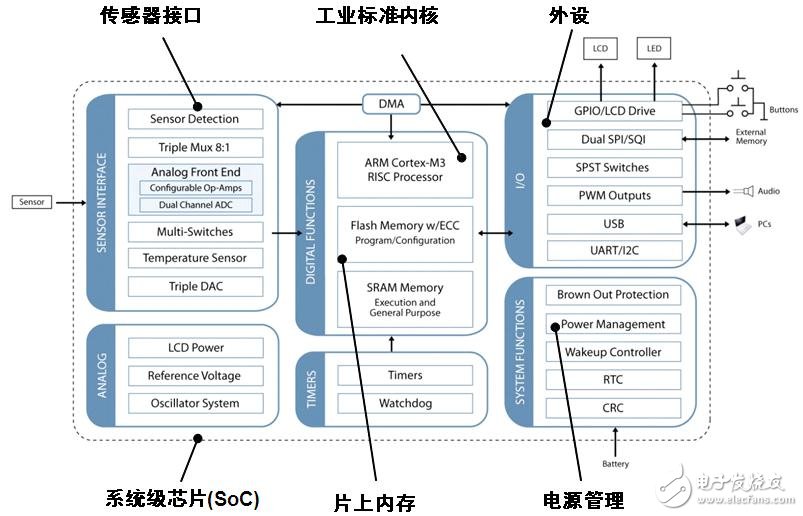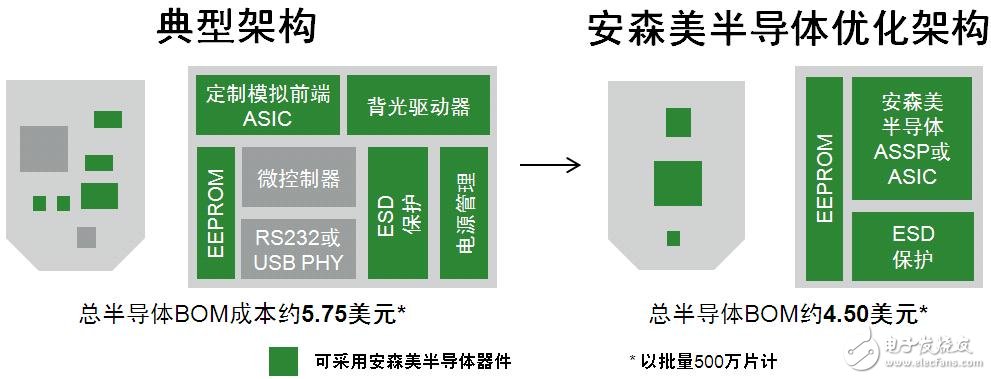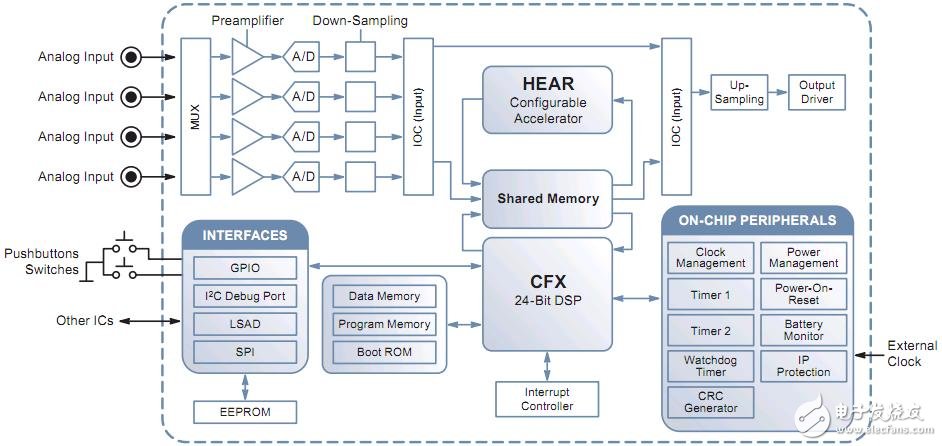Source: ON Semiconductor
Abstract : A variety of market forces are driving the development of portable medical devices. ON Semiconductor deeply understands the requirements and market trends of portable medical equipment and provides a variety of high-performance, high-integration, high-precision, high-reliability and low-power semiconductor solutions, such as mixed-signal microcontrollers, digital signal processors and digital signals Processing hybrid module for applications such as portable blood glucose meters, electrocardiographs, and wireless hearing aids.
In recent years, the pressure of the aging population and rising medical costs has driven the shift to home healthcare. This change, coupled with increasing interest in health care and the popularity of smart networked portable devices, is driving innovation in medical devices. As far as China is concerned, local medical equipment R & D is increasing, and local manufacturers strive to provide products that cost less than foreign competitors. Medical equipment for the Chinese market is also constantly pursuing improved reliability (accuracy and precision), portability and durability, while also focusing on built-in "intelligence" to improve the ease of use of medical equipment. These trends are driving medical semiconductors towards higher integration, miniaturization, and high energy efficiency.
ON Semiconductor provides a broad lineup of products and services, has engineering personnel with system expertise, has a deep understanding of the medical market's requirements for quality, reliability and long-term, as well as global production and logistics capabilities, enabling medical technology developers to Solve their unique design challenges with ON Semiconductor's high-performance silicon solutions. This article will focus on introducing ON Semiconductor's medical semiconductor solutions in line with China's consumer medical device trends.
1) Q32M210 32-bit mixed-signal MCU solution for portable medical equipment such as blood glucose meters
In recent years, case studies on the current state of diabetes in China have shown that due to changes in lifestyle and diet, diabetes in China is on the rise. Related factors include the impact of Western-style dietary patterns, lack of exercise, and China ’s transition from an agricultural country to a more industrialized country and the creation of more office jobs. These factors require the blood glucose meter (BGM) to be used for personal monitoring, change trend analysis, and communication with doctors, which promotes the use and sales of blood glucose meters.

Figure 1: Q32M210 architecture diagram.
ON Semiconductor provides a 32-bit mixed-signal microcontroller (MCU) for portable detection and precision measurement and monitoring equipment such as blood glucose meters-Q32M210. This device is a high-precision analog front end, using the industry standard ARM® Cortex ™ -M3 processor core, integrated 16-bit low-noise analog-to-digital converter (ADC), can be more precise blood sugar level calculation. The Q32M210 has extremely low energy consumption, a standby current of less than 26 μA, and a sleep current of approximately 750 nA, which helps extend battery life and is ideal for battery-powered portable medical device applications. This device is highly integrated, in addition to the integrated 32-bit ARM processor core, it also has an integrated reference sensor interface, including 256 kB flash memory, real-time clock, power management and interface. Such a high degree of integration is conducive to reducing system complexity, reducing external component requirements, reducing costs, supporting a smaller form factor PCB design and achieving a smaller blood glucose meter. The device has high flexibility, is compatible with a wide range of sensor types, does not require new external circuits to match the new blood glucose test strip type, and is easy to integrate, standardize, and connect. In addition to being used in blood glucose meters, Q32M210 can also be used in applications such as heart rate monitors and health monitoring equipment.

Figure 2: Comparison of traditional architecture and ON Semiconductor optimized architecture
It is worth mentioning that Q32M210 supports an extremely optimized blood glucose meter architecture. A typical architecture is shown on the left side of Figure 2. This architecture has high accuracy and simplicity, but it is not flexible. The optimized structure on the right not only has high accuracy, but also has strong characteristics and can be reconfigured. To help designers recall product development, ON Semiconductor also provides a variety of development tools, including hardware demo boards and rapid development prototypes, evaluation and development kits, and EDK documentation.
2) BelaSigna® series ultra-low energy consumption DSP system for portable monitoring and diagnostic medical equipment
As mentioned earlier, the trend in the medical market is driving the increasing demand for portable medical monitoring and diagnostic equipment, such as electrocardiograms (ECG). The demand for portability of these devices is increasing, and more digital signal processing (DSP) functions need to be integrated to provide real-time processing capabilities. For example, a patient may need to wear or carry a portable ECG device for a longer period of time in order to collect a series of long-term heart rate data. Such portable ECG devices often have low bandwidth requirements. At the same time, due to the use of battery power, they require lower DSP power consumption. For such portable medical device applications, ON Semiconductor provides BelaSigna® series of ultra-low energy DSP systems, such as BelaSigna® 250 and BelaSigna® 300.
The BelaSigna® series are fully programmable DSPs that optimize size, power consumption, signal integrity, and computing power. Take BelaSigna® 300 as an example, this is a 24-bit ultra-low power DSP with a size of only 3.6 mm and 2.6 mm, which provides a general purpose digital signal processor (DSP) with the power consumption and size of a fixed function application specific integrated circuit (ASIC) ) Flexibility, the added advanced analog audio input and 24-bit signal channel can achieve excellent audio quality, and the unique patented dual-core architecture realizes the simultaneous operation of many advanced audio algorithms such as echo cancellation and noise reduction, and can maintain extremely low power Consume. Figure 3 shows the block diagram of BelaSigna® 300. The device uses dual-core computing, which includes an open programmable CFX 24-bit DSP core and HEAR highly configurable coprocessor. The dual core balances processing power and optimizes energy consumption and design flexibility. This device provides a high-precision analog input section, including 4 independent input channels, providing a dynamic range of 110 dB, and an analog-to-digital converter (ADC) sampling rate of 1.27 to 60 kHz. The energy consumption of this device is extremely low, the supply voltage is as low as 1.8 V, the standby current is only 40 μA, and the typical energy consumption is 1 to 5 mA.

Figure 3: BelaSigna® 300 DSP system block diagram.
Fiber Patch Cords, Fiber Optic Patch Cord, Fiber Optic Patch Cables, Optical Patch Cord
NINGBO YULIANG TELECOM MUNICATIONS EQUIPMENT CO.,LTD. , https://www.yltelecom.com